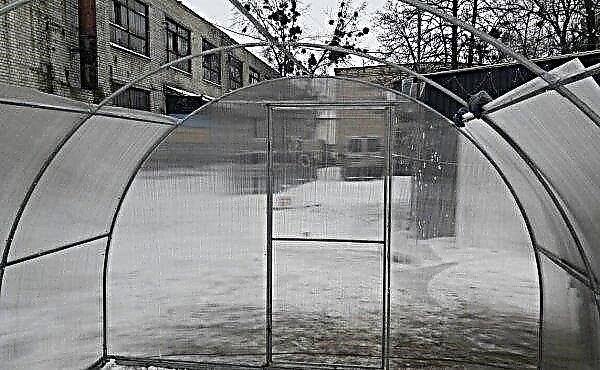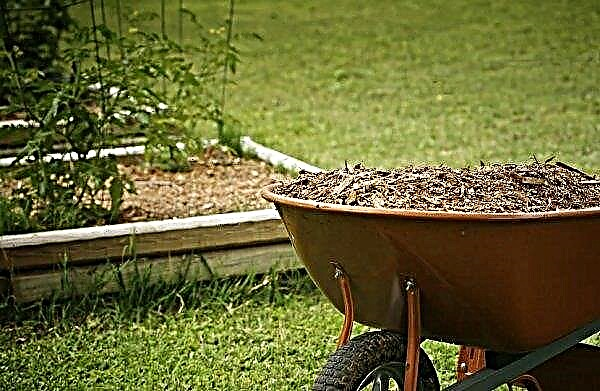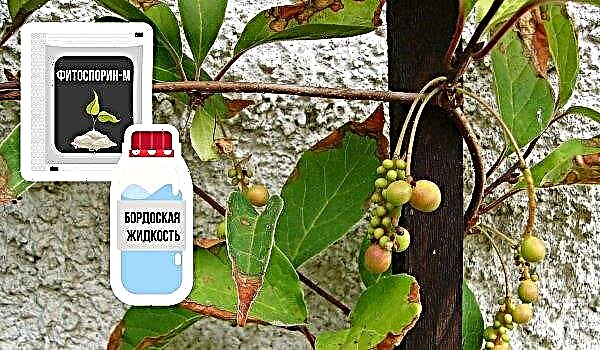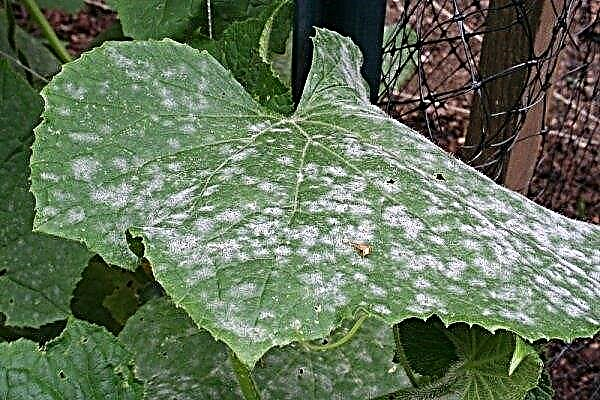It has been proven that you can get a really good tomato crop only in the greenhouse. Unfortunately, sometimes gardeners growing tomatoes under shelter encounter unexpected difficulties that almost never arise in open beds. The topic of this review is devoted to one of these problems, namely: the absence of ovaries in greenhouse tomatoes.
Possible reasons for the lack of ovaries on the bushes
In fact, there are not so many reasons why tomatoes grown in a greenhouse are not properly tied, and all of them, in one way or another, are associated with a violation of agricultural technology. Correctly and quickly making a "diagnosis", and even better - initially creating optimal conditions for the culture in the greenhouse, you can quite easily get rid of the problem.
Violation of the temperature regime in the greenhouse
The essence of the greenhouse is that the translucent material with which the bed is hidden absorbs sunlight, converts it into heat and keeps it inside the greenhouse, keeping it at a constant temperature. It is due to the preservation of a stable microclimate that the plants inside the greenhouse are able to quickly develop.
Protecting crops from wind, rainfall and pests is an additional advantage of the greenhouse, however, its main purpose is nevertheless to correct thermoregulation, which allows you to create inside the most suitable temperature, lighting and humidity for this type of plant.
Did you know? According to one version, the first greenhouse, or rather, a covered greenhouse, was created in the middle of the 13th century in Cologne by Albert Bolshtgedt, also known as Albert Magnus, who gave the city such a gift in honor of the visit of the anti-king of Germany, William II. Such a discovery cost the great German scholar excommunication: the Holy Inquisition considered the greenhouse an encroachment on the divinely established change of seasons and prohibited such "sacrilege."
Despite the fact that due to the accumulation of heat during the day and its release at night, the air inside the greenhouse, as a rule, does not overheat above the set maximum, monitoring of temperature indicators is still necessary. The fact is that at different stages of development, tomatoes make unequal requirements for the amount of heat, and therefore it is precisely due to temperature control in the greenhouse that both intensive seedling growth, active fruit setting, and their rapid ripening can be ensured.
Temperature indicators for growing tomatoes in a greenhouse at different stages of vegetation are shown in the table:
| Growth phase | ||
| Minimum temperature (night) | Maximum temperature (day) | Optimal temperature (day) |
| + 14 ° С | + 29 ° С | + 20 ... + 22 ° С |
| Flowering phase and laying ovaries | ||
| + 15 ° С | + 30 ° С | + 26 ... + 28 ° С |
| Fruit ripening phase | ||
| + 10 ° С | + 36 ... + 40 ° С | + 28 ... + 32 ° С |
As for the soil, during the whole period of the growing season of tomatoes it should not warm up more than + 25 ° С, and cool below + 13 ° С, otherwise the development of the plant stops.
Finally, it is important to know that it is at the initial stage of flowering that the tomatoes react very painfully to a sharp change in temperature during the day. This fact largely explains the fact that it is best to grow them in a greenhouse, where such differences usually do not happen.

Bad pollination
The microclimate violation in the greenhouse, including expressed as an unacceptable temperature change, during the period of active flowering of tomatoes prevents the formation of ovaries, primarily because under such conditions it is difficult or completely impossible to pollinate the flower, and if not pollinated, the flower simply falls off.
Important! Tomatoes are self-pollinated plants. However, for the formation of the ovary, it is necessary that the pollen from the anther fall on the pistil of the same flower or a neighboring one, from the nearest branch or another bush growing nearby.
It is in greenhouse tomatoes that pollination problems arise especially often, since there are no two main factors that ensure this process on an open bed: the movement of air masses and insect pollinators. In this situation, it is critical that the pollen on the flowers is as light and volatile as possible, and the anthers develop correctly, do not deform, and open in time.
There are 3 main reasons that negatively affect pollen quality:
- critically low temperature (the anther does not crack);
- critical heat (pollen loses viability or even becomes sterile);
- too much humidity (pollen becomes too heavy and begins to stick together).
If you adjust the microclimate, as well as provide the tomatoes with regular ventilation, using a light breeze inside the greenhouse as a natural pollinator, there are usually no problems with tying fruits on tomatoes. The fact that pollination occurred can be judged by the change in the appearance of the flower: its petals noticeably bend back. But in cases where tomatoes are grown in makeshift greenhouses, where there is no automated control over temperature and humidity indicators, it makes sense to additionally use the artificial pollination procedure. Depending on the size and configuration of the bed, you can do this in three different ways:
Depending on the size and configuration of the bed, you can do this in three different ways:
- Blowing - with the help of a fan or a hair dryer, tuned to the cold air mode, they act on the flower brushes, providing the most active movement of pollen.
- Shaking - the same effect is achieved due to vibration, but you need to act carefully so as not to break the branch.
- Direct contact - the most complex, painstaking, often damaging peduncle method, involving the mechanical transfer of pollen from flower to flower with a thin brush or cotton swab.
Lack of moisture when setting tomatoes
Tomatoes, unlike many other crops, do not change the requirements for humidity throughout the entire development cycle. The best indicator for them is 60–65%. The air humidity inside the greenhouse is too dangerous for flowering tomatoes, we have already mentioned, however, insufficient humidity also negatively affects the normal development of the bush, and therefore should not be allowed.
Important! Temperature and humidity in a greenhouse are related indicators: the warmer the air, the more moisture it can hold. In addition, the humidity level is inversely proportional to the tightness of the greenhouse or the intensity of its ventilation.
Too dry air in the greenhouse is the first cause of damage to plants by the tick, and this, in turn, leads to the fact that the ovaries do not form, and the formed ones crumble.
For this reason, experienced gardeners try to slightly reduce the humidity in the greenhouse during the period of active flowering and pollination of tomatoes (including by increasing ventilation, which further stimulates the pollination process), and immediately after ovaries appear, moisten the air in the greenhouse again. For this, the bushes are even recommended to be sprayed with water, which is almost never done when growing tomatoes in open ground.
However, it should be borne in mind that any moisture-enhancing procedures should be carried out in the first half of the day so that the plants become completely dry by nightfall, otherwise the likelihood of developing fungal infections on tomatoes increases.
Finally, the indicators of air and soil humidity should not be confused: for good flowering and fruiting, tomatoes need to be always moistened by 80–85%.
Poor quality seeds
Even when creating an optimal microclimate in a greenhouse from poor-quality seeds, it is impossible to grow a good crop. Many summer residents in the old-fashioned way prefer to plant tomatoes from seeds collected personally from last year’s fruits, sincerely believing that they are “tested” and therefore the best.
Unfortunately, in reality this is not entirely true, since the seed material is an excellent preservative of various diseases (bacterial, fungal and viral), and in the conditions of limited areas that are used on personal homestead farms, planting the same crops in a permanent place is just and leads to the fact that by the end of the season a large amount of dangerous microflora accumulates in the garden, which subsequently enters the seeds.
For this reason, it is better to buy seeds for planting, and it is desirable from manufacturers that have been proven and value their reputation.
Important! Bad or absent germination is the main, but not the only indicator of low-quality seeds. An infected seed can germinate, but subsequently such a plant will hurt itself and, in addition, will infect its neighbors in the garden with a dangerous pathogen.
To avoid such a danger, seeds, even purchased, are usually subjected to serious preplant planting, which includes disinfection (dressing). An exception to this rule is the products of leading European companies that carry out all the necessary activities with seed material before its packaging. Such seeds are sown dry, immediately after removing them from the package. They cost, as a rule, ten times more expensive than domestic counterparts, but they give a guaranteed result - both in terms of germination, and in terms of resistance to diseases and other adverse factors.
Planting material of inadequate quality
Not every summer resident can afford to grow tomato seedlings on their windowsill, so many people prefer to buy ready-made planting material, especially since it costs very little.
The problem is that such a product is far from always quality.
There may be several reasons for this:
- some tomato diseases, including quite dangerous ones, do not manifest themselves immediately, so an apparently healthy seedlings may actually be infected;
- to accelerate growth and improve the external characteristics of seedlings, many unscrupulous sellers use various growth stimulants (primarily nitrates) and other tricks that hide the true state of things;
- when buying ready-made seedlings, you can never be sure which particular variety a plant belongs to, so instead of a high-yielding hybrid with high immunity, you can buy a very ordinary tomato with very mediocre technical characteristics.
It should also be borne in mind that not all tomatoes are equally well suited for growing under a film, and therefore the last of the above arguments is very important to consider. So, for example, there are hybrids for which pollination problems are practically not characteristic, but they very painfully tolerate cold and sudden changes in temperature. They are recommended to be grown in a greenhouse.
In turn, they are not very suitable for a greenhouse:Did you know? The world's largest tomato was grown on its site by a farmer from Minnesota in 2014. The recorded weight of the record holder, called the Big Zack, is 8.41 pounds, which corresponds to about 3 kg 815 g!
- varieties and hybrids characterized by low resistance to late blight and other dangerous fungal infections (in the open ground, normal crop rotation will help save them from infection, but in the greenhouse they become as vulnerable as possible);
- tall tomatoes, if the size of the greenhouse is small;
- late-ripening varieties (the main advantage of the greenhouse is getting an early harvest, and, if possible, even several during the season), etc.
Care Methods for Preserving Ovaries
In order to ensure that the fruits on the tomato bushes are well tied and subsequently quickly and evenly formed, in addition to using high-quality planting material and creating the optimal microclimate in the greenhouse, professional farmers are sure to carry out a number of additional agricultural activities.
Proper top dressing
The first of these measures is the stimulation of fruit formation. You can increase the yield in various ways. Some of them are incompatible with the concept of organic farming, and therefore it is undesirable and even unsafe to carry them out on their own summer cottage, but there are also quite harmless methods from an environmental point of view.
Chemicals for stimulation
Fertilizing tomatoes with organic and mineral fertilizers should be carried out several times a season, however, the trick is that if at the initial stage of the growing season the plant needs a full complex of nutrients, then after flowering begins it is very important to exclude the nitrogen component from mineral additives or at least reduce it to a minimum.
Important! Excess nitrogen in the soil stimulates the development of green mass, however, it prevents the laying of buds and the formation of ovaries.
The optimal mineral “cocktail” for a tomato bed in a greenhouse (based on 10 l of water):
| Application Time | Structure |
| Before the beginning of active flowering | ammonium nitrate - 20 g; potassium chloride - 10 g; double superphosphate - 50 g |
| At the stage of ovary formation | potassium nitrate - 30 g; double superphosphate - 80 g; ammonium molybdate - 2 g |
| During fruit growth | potassium nitrate - 40 g; double superphosphate - 40 g |
To increase the effectiveness of top dressing, 1 tbsp is also sometimes added to the prepared composition. l sodium humate.
Spraying to increase yield
In addition to root dressing, spraying also helps to stimulate the formation and preservation of ovaries.
For these purposes, in particular, the following mineral fertilizers are used (the concentration is also indicated based on 10 l of water):
- superphosphate - 60 g;
- ammonium nitrate - 15 g;
- potassium chloride - 5 g;
- magnesium nitrate - 5 g;
- zinc sulfate - 5 g;
- calcium nitrate - 5 g;
- magnesium sulfate (sulfur source) - 10 g;
- manganese sulfate - 10 g;
- copper sulfate or vitriol - 2 g;
- boric acid - 10 g;
- vitriol - 5 g;
- alcohol iodine 5% - 50 ml.

If all the mentioned preparations are not available, the classic composition for spraying tomatoes in a greenhouse to strengthen the ovaries is a mixture of 10 g of manganese sulfate, 3 g of boric acid, 2 g of copper sulfate and 2 g of zinc sulfate in 10 l of water.
Often bread yeast is used to top tomatoes, but experts caution against this practice.
Important! Yeast alone is not a fertilizer, they only catalyze certain chemical processes in the soil, in particular, stimulate the development of organics and inhibit (due to the production of ethyl alcohol) the reproduction of some fungi. However, the unnaturally fast saturation of soil with organic matter under the influence of yeast also quickly leads to land depletion.
Hilling and mulching soil
Two more methods to improve tomato productivity in the greenhouse are hilling and mulching.
Contrary to the popular belief that hilling is a technology for caring for plants grown exclusively in open ground, this procedure is especially important for greenhouse crops. The fact is that it is in conditions of high humidity and constant heat that the green mass begins to actively develop, while the stems at the same time retain their original size. In order for the lush bush on a thin stalk not to break, it is necessary to dig as much ground as possible at the base. It also stimulates the development of the root system, and powerful and strong roots are the key to good nutrition and, as a result, a good harvest.
Hilling is carried out exclusively on moist soil, so the day before the earth needs to be abundantly watered, and then, armed with a small chopper, very carefully so as not to damage the roots, to pick up a hill of loose earth 10-12 cm high to the base of the bush along its entire circumference.
During the season, the hilling of greenhouse tomatoes is carried out 2-3 times, and the first procedure should be carried out about a month after transplanting seedlings to a permanent place.
Covering the soil around the bushes with a dense layer of organic matter (straw, peat, hay, mowed grass or sawdust), called mulching, is necessary in order to preserve the looseness and moisture of the earth, as well as to block the growth of weeds and save yourself from the need for regular weeding, which a greenhouse, due to limited space, is especially inconvenient to do.
Tips from experienced gardeners
Among the additional recommendations that will improve the yield of tomatoes in the greenhouse and avoid shedding of ovaries, the following can be mentioned:
- Maximum lighting. Tomato is a photophilous culture, in the shade it can grow well, but practically will not bear fruit.
- Correct bed orientation. If you build greenhouses not from north to south, but from east to west, each bush will receive the same amount of light and heat.
- Landing density. The standard norms for a greenhouse are 40 cm between bushes and 50 cm between rows for low-growing tomatoes, tall plants are planted with each of these parameters increasing by at least 10 cm.
- Proper placement. At the extreme points of the greenhouse, it is recommended to plant the earliest varieties, and mid-ripening and late, respectively, to shift to the center.
- Mandatory arrangement of greenhouses with ventilation windows, and even better - an automated ventilation system.
- Drip irrigation. Such a system allows for significant water savings while using it as efficiently as possible. At the same time, it is very important to place the drip irrigation tape on top of the mulch layer: this will create the right microclimate on the soil surface and accelerate the conversion of the covering layer to organic fertilizer.
- Pinching the growth point and removing a large part of the leaves after laying fruit brushes. This trick allows the bush to direct all life juices to the setting and development of fruits.
- A sharp reduction in watering and top dressing during the period the fruits reach the required size. Provides incentive for tomatoes to acquire ripeness color.
- Mandatory removal from the bed of diseased plants.
- Shallow digging of a bed after harvest for the purpose of mixing the soil with the remains of mulch. It is also very useful to lay out the tops of freshly removed tomato bushes on a bed previously crushed and soaked in water before loosening: this crop, it turns out, grows very well "on its own."

The absence of ovaries on greenhouse tomatoes is a common, but easily resolved problem. It is only important to know the basic rules for growing this crop in closed ground and to observe all the agrotechnical methods used for this.














